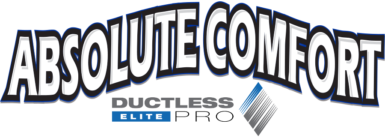Why Cooling Matters for Pole Barns and Garages in Indiana
Central Indiana summers are no joke. With heat index values frequently surpassing 100°F, many homeowners are transforming pole barns and detached garages into workshops, home gyms, or hobby spaces. But without proper cooling, these buildings can quickly become uncomfortably hot—or even hazardous to use.
Unlike traditional homes, pole barns are often built without insulation or climate control. Add in high humidity and metal construction, and you’ve got a space that traps heat fast. Whether you’re storing tools, working on projects, or just trying to stay comfortable, a reliable cooling system is essential.
Why Cooling a Pole Barn Is Different from Cooling a House
When it comes to cooling pole barns or detached garages, there are some unique challenges:
- Little or no insulation – Many pole barns are constructed with thin, uninsulated metal walls that conduct heat.
- High ceilings and wide-open space – This means more air volume to condition, which increases your cooling load.
- No existing ductwork – These spaces often need standalone systems.
- Detached from the home’s HVAC – You’ll need a dedicated solution that doesn’t rely on your main home system.
Top Cooling Options for Pole Barns in Indiana
1. Ductless Mini-Split Systems
Mini-splits are one of the most effective solutions for cooling (and heating) pole barns. They require no ductwork, operate efficiently, and provide excellent temperature control.
Why choose a mini-split:
- Works well in large, open areas
- Offers both heating and cooling
- Energy-efficient and quiet
- Perfect for year-round use in Indiana’s fluctuating climate
Mini-splits consist of a compact indoor air handler and an outdoor condenser, connected by refrigerant lines. Installation is quick, and they’re a favorite among homeowners converting outbuildings into livable spaces.
2. Window or Wall-Mounted AC Units
For smaller or seasonal-use buildings, window or wall units can be a budget-friendly choice.
Best for:
- Small, enclosed areas
- Basic cooling needs
- Occasional use (e.g. summer-only workshops)
Keep in mind:
- Not ideal for large or poorly insulated spaces
- Requires proper window or wall placement
- Less efficient than mini-splits over time
3. Portable Air Conditioners
Portable AC units are flexible and easy to install, though they come with some downsides.
Pros:
- No permanent installation
- Moveable from space to space
- Plug-and-play convenience
Cons:
- Noisy and less efficient
- Often not powerful enough for large areas
- Still requires a vent to the outside
These units can be useful for temporary or emergency cooling but may struggle during extreme heat.
4. Traditional Ducted HVAC Systems
For larger pole barns or finished outbuildings, a full ducted HVAC system might be appropriate.
When to consider:
- You’re fully finishing or remodeling the space
- You want even air distribution throughout a large building
- Budget allows for professional duct installation
Note: While highly effective, this is often the most expensive option due to the labor and materials involved.
Don’t Overlook This: Insulation & Air Sealing
No cooling system can perform well without proper insulation. In fact, the best way to reduce your long-term energy costs is to ensure your pole barn is properly sealed and insulated.
Indiana insulation facts:
- Insulating a pole barn typically costs $1.00 to $4.50 per sq ft
- Spray foam (especially closed-cell) offers top-tier air sealing and durability
- Even basic batt or foam board insulation can drastically improve system performance
Without insulation, your AC will work overtime—and still struggle to keep up.
How to Size Your Cooling System: BTUs Matter
Proper sizing is key to performance. For pole barns, standard home sizing charts won’t always apply due to higher ceilings and different construction materials.
Indiana pole barn sizing tips:
- Standard: 500 sq ft per 1 ton (12,000 BTU)
- Add 20–30% more for poor insulation or high ceilings
- Adjust upward for equipment that generates heat (e.g., tools, welding, machinery)
Example: A 1,200 sq ft pole barn with 10–12 ft ceilings may need a 36,000 BTU (3-ton) system, especially if uninsulated or used year-round.
Year-Round Climate Control: Why Heat Pumps Make Sense
Ductless mini-split systems often double as heat pumps, making them ideal for Indiana’s four-season climate. These systems provide energy-efficient heating down to -15°F.
Benefits of heat pump mini-splits:
- Cool in summer, heat in winter
- Energy-efficient and reliable
- Perfect for hobbyists or year-round workspaces
- Lower operational costs than electric resistance heat
If your space needs to be functional in both July and January, a heat pump-equipped mini-split is a smart investment.
Managing Indiana’s Humidity: Stay Cool & Dry
Humidity is a major factor in summer discomfort. Indiana’s sticky summers can make a 75°F room feel more like 85°F without proper moisture control.
Tips for humidity control:
- Choose systems with built-in dehumidifiers
- Add a standalone dehumidifier if needed
- Ensure good ventilation—especially for hobby use or animal shelters
- Use vapor barriers and insulation to reduce condensation
Good ventilation not only improves air quality but helps prevent mold, mildew, and structural damage
Final Takeaway: Find the Right Cooling System for Your Pole Barn
Every pole barn is unique—and so are your comfort needs. Whether you’re cooling a workshop in Greenwood or an outbuilding in Franklin, choosing the right HVAC system starts with understanding your space, usage, and budget.
📍 Serving Central Indiana homeowners in Franklin, Greenwood, Carmel, Fishers, Anderson and surrounding areas.
👉 Ready to make your pole barn comfortable year-round? Contact us for a personalized recommendation. With expert help, you can choose the right size, system type, and insulation strategy to create a space that works as hard as you do.
